There’s much to admire about a space that’s decked out with memorabilia from a bygone era but it’s so easy to take all of the hard work that’s gone into it for granted.
I arrived at the Lost in the 50s museum with no prior expectations. Sometimes I prefer to be blown away by the space rather than conduct exhaustive research – I love the anticipation that comes with not knowing. As it were, my nonchalant approach paid dividends on this occasion as Glen Jenning’s collection took me back to a time that I’d only ever experienced through television.
The old brewery has been converted into what Glen describes as the ultimate man cave. The space is divided into separate areas, each with their own unique look and feel. The Great Hall is a sight to behold with over 30 factory originals adorning the floor, while a modified car section hosts the 1966 Batmobile, a Delorean and a range of Corvettes among others. There’s a diner reminiscent of Happy Days, a newly built mezzanine, a gift shop and a display case room. Pieces vary from quirky toys to vintage food packaging, soda machines to petrol bowsers… the list goes on.
There aren’t enough words to truly describe this incredible space. A visit during one of the monthly open days is the only way to gain a full appreciation. Even then, you’ll be hanging to go back again – there’s just so much to take in. Glen and museum manager Mark still notice things they can’t remember seeing before… and they are here everyday.
So why the fascination with the 50s?
“I have always been fascinated by America and I’m sure I was American in a past life,” Glen laughs. “It was really about growing up on American TV and my fascination with the cars. There’s always been something about American cars that has appealed to me. I’ve been collecting them for 30 years now.
“I think in a nutshell, in terms of the world in time, America in the 50s and 60s was the pinnacle of when life was good. They had come out of the war, the economy was booming and everyone had jobs. It was a fun time to be alive. There weren’t a lot of restrictions on what you could do. It was all about cars, colour and fun. You just need to watch the old Elvis movies to get a feel for what it was like.
Glen knows that he’s not the only one in the country who is fascinated by the 50’s culture in America either.
“This place appeals to people because everybody in Australia grew up on American TV. Most people would love to go over there but it’s not feasible for everyone so for $15 we can give them a feel of what it was once like.”
Opening up a public museum was never Glen’s intention. He had a car collection that he couldn’t enjoy because they were hidden in various sheds. Cars were stacked on top of each other and it got to a point where he had to make a decision: sell most of them off or find a place where he could display and enjoy them. Thankfully the latter decision was chosen and the search for a suitable space begun.
“I came across this abandoned building by chance as I live nearby. It went out to tender so I made a ridiculous offer and at first they baulked at my offer. Remarkably, the agent contacted me some time later and after going back and forth it somehow got over the line.
“The key for us when searching for a space was the width of the main hall. We needed 18m to facilitate the six meter cars and that’s exactly what this place offered. I still remember the day we brought one of the big cars in just to see how it would all fit. We knew then and there that it would do us. Then the job started…”
Glen and Mark spent a solid month just cleaning the place up before they shifted anything in. They spent days on a scissor lift with a Gerni degreasing everything. Being an old brewery meant there were pipes from wall to wall that needed to be unbolted and thrown out. Walls were knocked down and slight extensions were added on. The two of them worked in unison for about five hours a day but they weren’t in a rush because there was never an intention to open the place up. It was going to be a museum, but a personal one. Glen had the vision and a sketch book full of ideas. Surprisingly enough, the place looks exactly how he sketched it up, even before they had found the space.
“A lot of the memorabilia was in boxes and tubs. We were finding stuff that I couldn’t even remember buying. It was fun though. Everything was sprawled across the floor and I would come here at night and think to myself, ‘how on earth are we going to do this’. Thankfully we came up with an effective system and eventually got it done. The cars were the last thing to come down.”
It took about 16 months to deck the place out and the more that Glen’s mates came to visit, the more they convinced him to share it with a greater audience. The doors were first open to the public in August 2012.
“Our first open day was mainly for friends. I didn’t want just anyone to walk in. It was a real spin out though because people who came through wanted to come back the next month. We had a visitor’s book and I was blown away by the comments. My wife was working the door and told me that the overall response was overwhelming.
“Our open days continue to grow and people are always offering ideas but sometimes you have to hold back. We don’t want to live and breathe it. We’ve had family days, caravan clubs and TAFE colleges, even retirement homes come through. Not to mention every local car club you could think of. We’ve had visitors from NZ, Europe and the United States. We’ve even had weddings right up the centre carpet of the Great Hall.”
Glen stresses that it’s not a business though. The takings they get through the door wouldn’t cover the insurance on one car, let alone all of them. The guys have fun doing it and get a real buzz out of seeing people’s faces that walk in for the first time.
“When you see the look on someone’s face after they’ve seen it for the first time – it’s satisfying because it’s something we created. We do get a little bit blasé about it occasionally but there is just so much to see. There’s well over 6000 pieces around the place.
“The open days have become a real family affair. Our wives and daughters work the door and gift shop and there’s just a good vibe around the place. We have a DJ playing 50s music outside and people just have a good time.”
Glen stresses that the day it becomes a chore will be the day that he’ll close it to the public.
“Overall, it’s designed to provide an escape from the world we live in. You watch the news every night and there’s nothing but grief. You come in here and just lose yourself in a really fun era. We have groupies that come here every open day that dress up and imagine they’re living in the 50s because it’s a time that they would rather live in.”
Rather than boast about his collection, Glen thinks of himself as a part-time custodian of the cars he owns.
“The legacy of my museum will pass on to others and I simply hope they get as well looked after. We have to protect the history and the legacy because these older cars are a dying breed. If we don’t keep the next generation interested, no one will. And that’s the nice part about it. We get a lot of kids through and they just love it. It gives them an idea of what life was like in the 50s and then they form their own opinions. We get 14-15 year old kids who come through and tell us that they want to save for their first American classic.”
Glen was only a teenager himself when he purchased his first Corvette. He admits that he made some good investments when he was young and while his mates were out partying every weekend, he was working as a nightclub bouncer which eventually kick started his successful security business.
“Through my business, I managed Kostya Tzu for many years which meant I spent a lot of time in America. After Kostya was settled in each trip, I had plenty of spare time. Sometimes we would be there for three or four weeks at a time. I would look for cars online and if I did my homework well enough I could find cars there for half the price I would have paid for them in Australia.
“Eventually I went searching for certain vehicles. I gradually narrowed down my train of thought and had specific makes and types in mind. My collection is split into two main sections: factory originals and the modified vehicles. I love the fact that nobody has touched the original cars. They look identical to how they would have straight out of the factory. The other cars are fun. They’re the movie cars and the muscle cars,” Glen says with a smile on his face.
The cars don’t just sit there looking pretty either, he drives all of them.
“Cars are a bit like us, if they don’t get exercised, things tend to break. Even if we don’t drive them, once a month we’ll start them up for 15 minutes and gas ourselves out to expand the seals and heat up the blocks.”
On the day of our interview, Glen was preparing for his 76th trip to America which was taking place the next day. He and Mark generally go twice a year but occasionally three trips are needed. They focus their travels around California, San Diego and Las Vegas where they hit deceased estates and swap meets. Think American Pickers with a narrower focus and two cooler guys driving the van.
“I’m fortunate to be in a position where I’ve done well in business to be able to sustain a passion like this. I don’t drink or smoke and I don’t waste money. I buy assets that will appreciate over time and have done so since I had enough money to buy my first house,” Glen explains.
He isn’t one to brag either which explains why the museum is virtually kept under wraps and only open to 300 visitors at a time, 12 times a year.
The cars in the museum aren’t for sale but Glen does dabble in selling cars that he ships back from the States. People ask him to search for particular models while he’s over there and he charges a small service fee on top of the price of the cars once he sells them. Again, it isn’t a business; he does it for the love of the cars and to continue the preservation of the dying car breed.
“As we get older and it wears thin we’ll talk to our people at Shannons and have an international weekend auction and everything will get sold in one hit, gone… time to move on with something else in life. I would probably keep two cars for the fun of being involved in car clubs but I’d sell everything else. Who knows, I might even get a buyer who purchases the lot and kicks it off as a business.”
Until then, Glen will continue to dazzle visitors, enjoy his space and stay lost in the 50s.

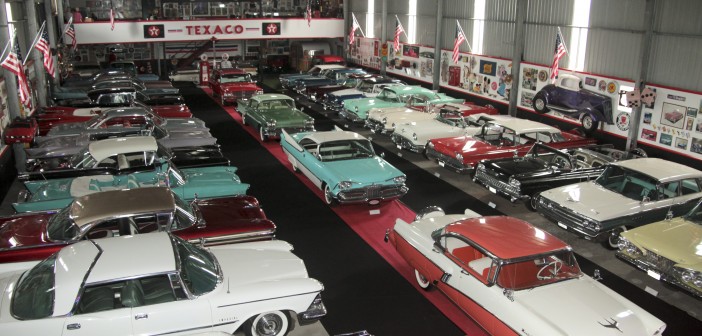
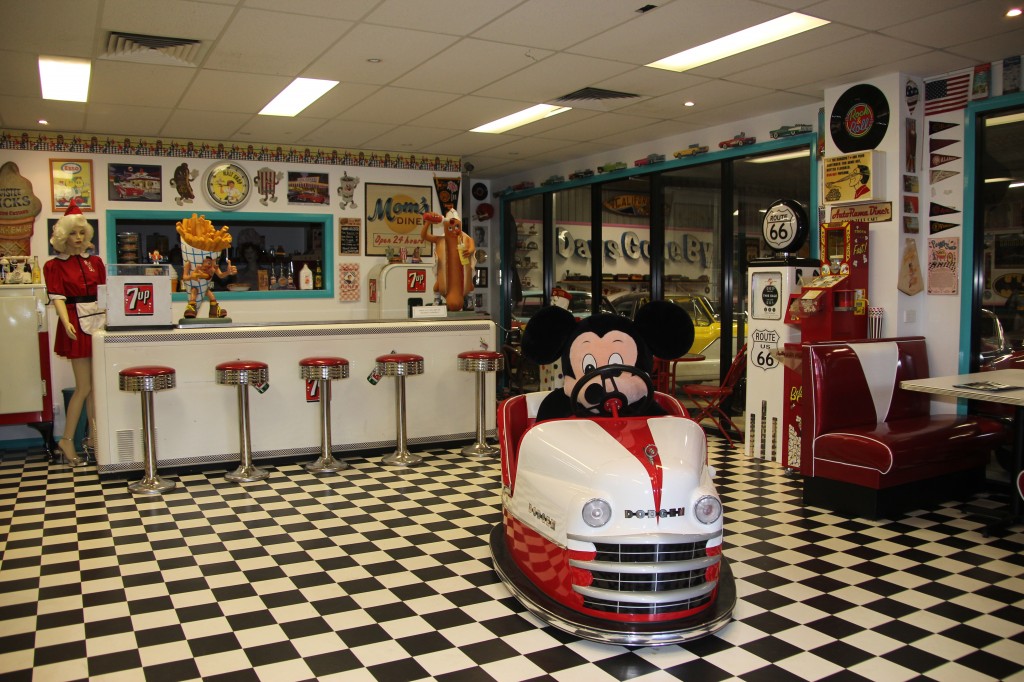
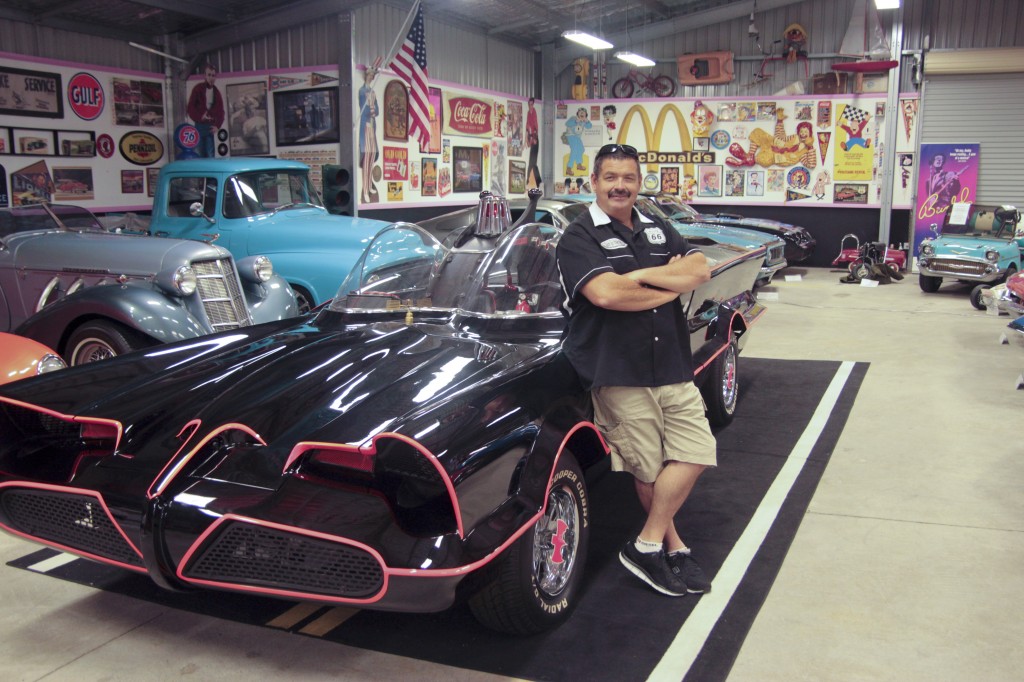
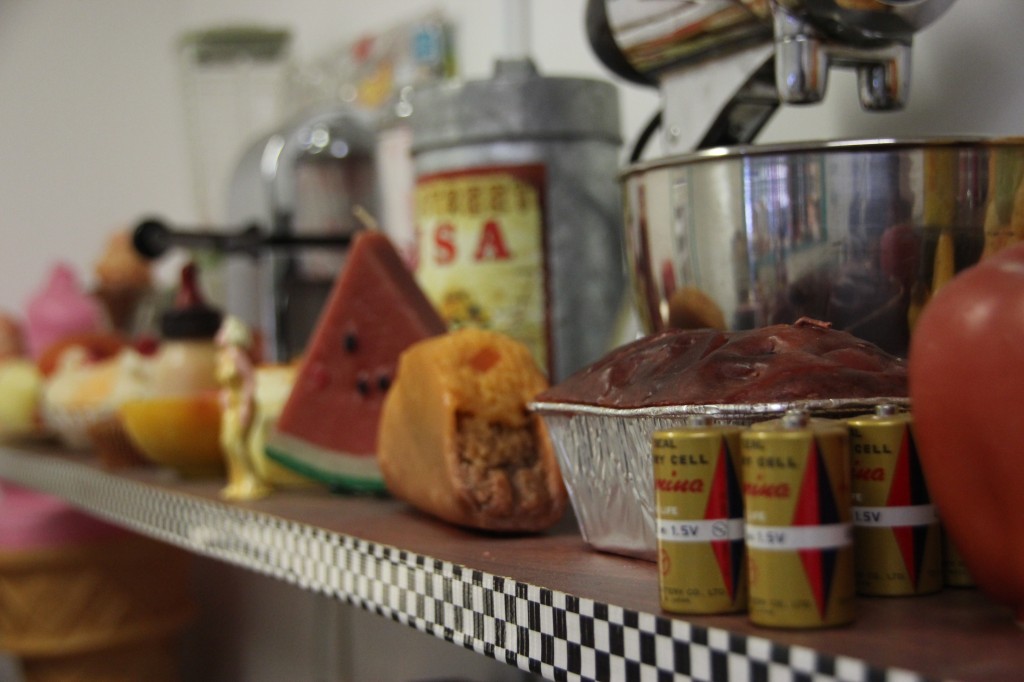

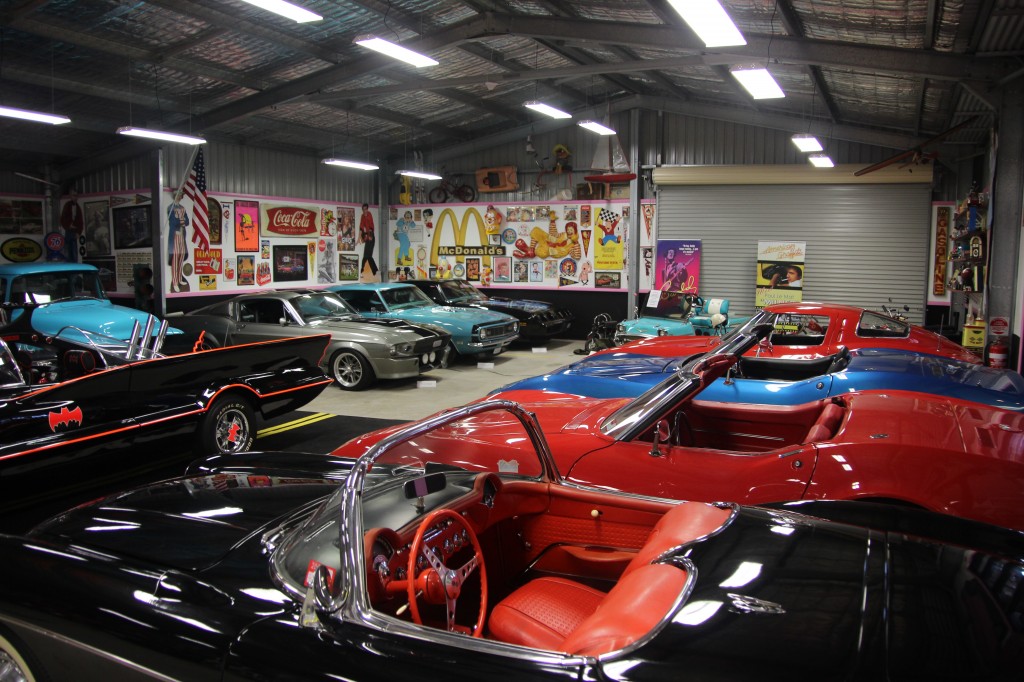

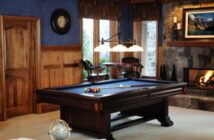
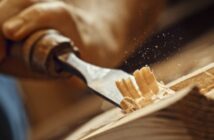

2 Comments
Pingback: 10 Must-Visit Australian Automotive Museums - ManSpace Magazine
Pingback: Top 10 Man Cave Themes - ManSpace Magazine